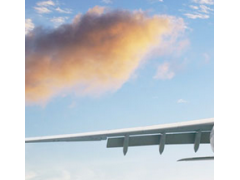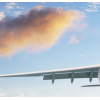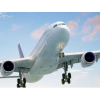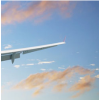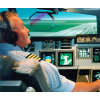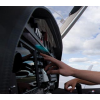As soon as you begin to investigate professional flight training, you are likely to come across the term ATPL (Airline Transport Pilots Licence). It is this licence the student pilot aspires to when embarking upon a career as a professional pilot. An ATPL is the highest licence a pilot can obtain and is the qualification that allows the holder to act as the Pilot in Command (PIC), or Captain of a large transport aircraft. Although it is true to say that there are other types of aerial work a pilot is able to do while holding only a Commercial Licence, the ATPL is generally considered to be the qualification towards employment. For this certificate, you will need to pass written tests and flight tests, have a first-class medical certificate and be a high school graduate.
After you are certified, you will need more experience and flight hours before an airline will hire you. Your level of experience is based on the number and complexity of the aircraft you’ve flown, the quantity and complexity of the flying you did (jet or propeller, day or night, local or cross-country, flying with or without visibility, etc.), and which crew positions you’ve had. A pilot might work as a flight instructor, then move on to a charter company in order to gain the experience he or she needs in order to become a commercial airline pilot. Your employment by an Airline company in the position of first officer or Captain can become a reality if after or during your training you have logged 1,500 flight hours, including 250 hours as the pilot in command.
Ratings and Other Certificates
It is quite common for an ATPL certificate to be composed by a number of different minor licences and ratings. Other licences include a Private Pilot Licence (PPL) and Commercial Pilot Licence (CPL). PPL permits the holder to act as the pilot-in-command of an aircraft privately, wher CPL enables the holder to act as a pilot of an aircraft and be paid for his/her work. The term rating refers to certified training on different aircraft types, different engine types, instruments etc.
Some of the most common ratings during training are the following:
Instrument Rating (IR):
It refers to the qualifications that a pilot must have in order to fly under IFR (Instrument Flight Rules). It requires additional training and instruction beyond what is required for a PPL or CPL, including rules and procedures specific to instrument flying, additional instruction in meteorology, and more intensive training in flight solely by reference to instruments.
Multi Engine Piston Class Rating: (MEP)
It refers to a specialized licencing to operate aircraft types with more than one engine.
Night Qualification Rating:
It enables the holder to fly in visual meteorological conditions (fair weather) under instrument flight rules at night time.
Type Rating:
It refers to the certification of an airplane pilot to fly a certain aircraft type that requires additional training beyond the scope of the initial license and aircraft class training. For example Boeing Class Airliners etc.

